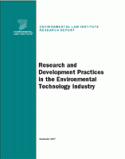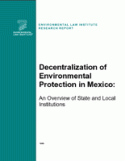
Research Reports
ELI publishes Research Reports available for free download that present the analysis and conclusions of the policy studies ELI undertakes to improve environmental law and policy. These reports contribute to education of the profession and disseminate diverse points of view and opinions to stimulate a robust and creative exchange of ideas. Those publications, which express opinions of the authors and not necessarily those of the Institute, its Board of Directors, or funding organizations, exemplify ELI’s commitment to dialogue with all sectors.
This report discusses specific lessons learned from the Acid Rain Program, contained in Title IV of the Clean Air Act Amendments of 1990 (CAAA), that apply to an emissions cap and allowance trading system for greenhouse gases (GHGs). Chapter II discusses the basic design features in applying an emissions cap and allowance trading system to emissions of CO2, methane and other GHGs. Chapter III evaluates lessons from Title IV, and discusses specific issues in establishing a similar regulatory system for GHGs.
Read More >
This report presents the results of research conducted by the Environmental Law Institute, in collaboration with Environmental Business International (EBI). Together, ELI and EBI have studied the research and development practices of environmental technology developers, as well as how government actions could best support these technology development efforts.
Read More >

This report examines the role that federal environmental regulations play in the context of the federal-state standard setting relationship. Chapter one provides an overview of how federal regulations relate to standard setting. Chapter two identifies the general policy consequences of allowing state program flexibility. Chapter three examines how federal regulations currently provide for flexibility in this relationship. Chapter four evaluates the techniques used by the federal government to afford or restrain flexibility.
Read More >